Ola E-Scooters – Will The Ride Be Enjoyable?
- By Dr M Rammyaa and Dr K Rajeshwari
- September 02, 2021

The rising impact of carbon footprint and deterioration of air quality have been major concerns across the globe. The state and central governments have introduced various subsidies to reduce vehicle emissions. As sustainability goes mainstream, automobile companies are investing heavily in electric vehicles that are environmentally friendly. Multinational ride-sharing company Ola has recently launched its ‘e-scooter’, and this would be a welcome move. Ola has strategised the right product, the right promotion – all at the right time. Digital access, big boot space, keyless, fast charging… all go into the right product, the Ola e-scooter! Tweet by tweet, Ola has generated excitement from ground zero till launch. Why will customers buy Ola e-scooter? How it is beneficial to the environment? Two variants, 10 colours, all contributing to the right promotional vibes! Its timing is also perfect – people have become more conscious about the environment during the pandemic.
But are these points enough? Ola’s long-term success will depend on numerous other factors such as the right price, the right supply chain configuration and formulating the right strategy to reach the target audience.
What’s the right price?
India is a price-sensitive market. The key challenge in front of Ola is to provide a new experience at an affordable cost. The majority of the two-wheeler population falls into the middle-income group segment. This segment of consumers primarily looks for a fair economical price while buying any new product. In 2021, two-wheelers sales reached 151.19 lakh units (IBEF, 2021). Scooters are available in India at a price range of INR 40,000 to INR 130,000. Ola S1 and S1 pro are priced at INR 99,999* and INR 129,999*, respectively. (*Prices may vary according to region and subsidies). The average price of a scooter today for the middle-class segment is between INR 50,000 and INR 70,000.
What’s the right Supply Chain Configuration?
The company must get its supply chain intricacies right as this important driver increases the cost. Ola is going to deliver directly to the customer. The direct model benefits Ola in the short run in reducing the advertising and overhead costs, eliminating dealership costs and working closely with consumers. Consumers also benefit from the closeness and individual care they receive from direct sales. On the manufacturing side, the direct model cuts out intermediaries, and they can follow lean inventory and save inventory costs. But the company should look holistically and balance inventory costs along with the transportation costs in the long run. Transportation costs (especially outbound costs) will be more in the direct model. Ola must learn from its previous experiences in this regard and focus on the after-sales service and support space. It’s easy to persuade the customers to buy, but the experience thereafter needs to be good too.
What’s the right strategy to reach the customers?
Understanding the mobility landscape and focusing on the right strategy to reach the target audience is one of the most important aspects of the business continuum.
The changing mobility landscape
The automobile industry is evolving fast and technology has brought a remarkable shift in manufacturing, assembling products, processes and the way we drive thanks to Industry 4.0 revolution – Internet of Things (IoT), Artificial Intelligence (AI), Machine Learning and Robotics applications. The technology revolution in the global automotive sector is known as the CASE (Connectivity, Autonomy, Shared mobility and Electrification) technologies (Deloitte, 2020). Staying relevant and up-to-date on contemporary technological innovations is key for the automobile industry.
With every passing day, new challenges and opportunities emerge.
1. Supply chain disruptions: The extended Covid-19 pandemic unequivocally affected the Indian automobile industry which was just surviving with a reverse gear in demand. During March-July 2021, the industry witnessed colossal interruptions due to semi-conductor chip shortages.
2. The transition from BSIV to BSVI emission norms: This is one of the pressing challenges that the automobile industry is facing. With changes in government regulations, it becomes difficult to sell old BSIV vehicles. This has led to a rise in the inventory of BSIV vehicles.
3. Non-Banking Finance Corporation (NBFC) Liquidity Crisis: NBFCs have been a major strength of the automobile industry as they are the key lenders for financing automobile purchases in semi-urban and remote villages where credit accessibility from the banks is normally difficult. NBFC’s liquidity crisis severely crushed many sectors, and the automobile industry is one of the major ones that it took a high toll on.
4. Urbanisation: Urbanisation poses another challenge for the automobile industry. Availability of other car rentals and non-availability of parking space in the metropolitan cities has made individuals defer their vehicle purchasing decisions.
5. Rising fuel cost: Change in GST-related tax structure, volatility in fuel prices, increased interest rates and insurance premium resulted in a steep sales drop of two-wheelers and four-wheelers. The Insurance Regulatory and Development Authority (IRDA) revised its insurance standards in September 2018, which resulted in increased insurance costs for two-wheelers and passenger vehicles (PV).
6. Growing demand for alternatives: Due to Covid-19, people may switch to personal mobility instead of shared mobility as a safety measure. Service-based models such as rental cars, pay-as-you-go models may kick-off.
Focus on the right positioning strategy
Arriving at the right positioning strategy involves recognising users’ distress areas and addressing them, in addition to providing them with key benefits.
Identifying the appropriate consumer segment is critical. Analysis of the current micro, macro-environment, market conditions, competition and economic swings is important, but the focus should be more on categorising consumers who have a high probability of purchasing e-vehicles. This entails understanding the consumer’s lifestyles, values, attitudes and buying behaviours. For instance, studying different generations provides a clear understanding of consumption behaviours during a particular period and how it differs across other age groups. It helps to appreciate how diverse formative habits, experiences and lifestyles relate to the ageing lifeycle. Usually, a generation refers to groups of people born over a span of 15 to 20 years, such as the Millennial generation. There is no definite start and end date for Millennials. Those who were born after 1980, i.e. between 1981 and 1996, are widely considered as Millennials (Pew Research Centre, 2019). The rise in the income level of Millennials and a higher variety of choices changed the mobility landscape. These particular segments dominate in terms of size as a result of a growing middle-upper class and a young populace. The evolution of the technology revolution also changed the way Millennials drive and their preference for mobility. Millennials are more conscious of being environmentally friendly; they prefer walking or using public transport due to affordability as compared to huge purchase and maintenance cost in owning a vehicle. Unlike the elder cohorts, many of the Millennials do not want to own a car; instead, they prefer scooters and shared mobility. (Deloitte,2019)
Recognising consumers’ distress points
Spotting the consumers’ pain points early will pave way for smooth penetration in the long term. For example, it takes two minutes to fill the fuel, but what about charging? Unlike conventional two-wheelers, consumers need to spend additional time for charging. Though consumers can charge in-home, Ola is also planning to put up hyper charging stations across the country to reduce the anxiety of riders.AI and customisable digital screens make consumers remain always connected, but there’s a flip side to it too. These digital screens and music apps will distract the riders during rides. Limited (two) variants, charging time, battery replacement cost anxiety and technical issues in sharing apps would also pose as shortcomings in the current options. Identifying consumers’ distress points with the current options may reveal opportunities on how to position the Ola e-scooters. Based on that, the company can create a tailored user content that will result in a greater possibility of converting them as brand evangelists for Ola e-scooters so that they will share their wonderful experiences with the public at large.
The Ola e-scooter is a potential disruptor in the mobility space. While there is a lot of excitement and eagerness to embrace the product, the organisation has to put in place a sound strategy in order for us to enjoy the ride!
References:
1. https://www.ibef.org/industry/india-automobiles.aspx assessed on 15th August 2021
3.https://www.pewresearch.org/fact-tank/2019/01/17/where-millennials-end-and-generation-z-begins/
Ultraviolette Automotive Expands Retail Network To Six Locations In Mumbai And Pune
- By MT Bureau
- November 27, 2025
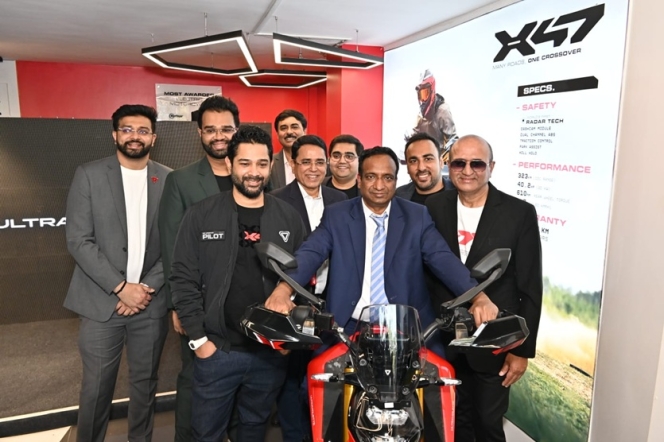
Bengaluru-based electric vehicle maker Ultraviolette Automotive has accelerated its nationwide presence by opening six Experience Centres across Mumbai and Pune within 48 hours. The locations include Andheri, Vashi and Thane in Mumbai, and Shivajinagar, Baner and Kharadi in Pune. This expansion strengthens the brand's foothold across 30 cities nationally.
The new UV Space Stations, in partnership with Hallmark Mobility (Mumbai) and KHV Mobility (Pune), offer customers the opportunity to explore Ultraviolette's motorcycles: the X-47 Crossover, F77 SuperStreet and F77 MACH 2. The centres provide test rides, sales, service, spares and a range of motorcycle accessories, catering to the end-to-end customer lifecycle.
Narayan Subramaniam, CEO and Co-founder, Ultraviolette Automotive, said, “At Ultraviolette, our mission has always been to engineer products that push boundaries of performance and technology while delivering an after-sales and ownership experience built on trust and dependability. With our expanding network of retail and service hubs across Maharashtra and other key markets, we are unifying sales and service to offer riders a seamless journey from the first moment they walk into a reliable after-sales experience. As we continue to grow, we are also building a connected ecosystem that brings technology, sustainability, and convenience together. Every Ultraviolette Space Station is designed to represent the future of mobility, where innovation becomes accessible, and every rider resonates with the future driven ethos of Ultraviolette.”
Kaushik Kothari, Partner at KHV Mobility, said, “In line with our vision of driving growth through strategic opportunities, we are proud to be associated with Ultraviolette. We firmly believe that EVs represent the future of two-wheeler mobility, and Ultraviolette’s sharp focus on engineering, design, and customer-centricity resonates deeply with our values. Together, we are confident of contributing to a shared journey of innovation and mutual success.”
Earlier this year, the company launched two other offerings: the Tesseract electric scooter, featuring an integrated radar and dashcam and the Shockwave electric motorcycle.
TVS Motor Co, BMW Motorrad Partnership Surpasses 200,000 Units
- By MT Bureau
- November 27, 2025
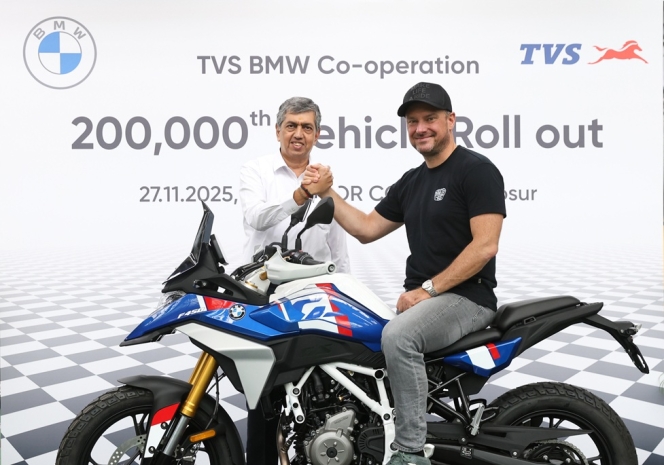
TVS Motor Company (TVSM) and BMW Motorrad have announced the production of 200,000 units under their partnership. This milestone highlights the success of the collaboration, which began in 2013 and focuses on the sub-500cc two-wheeler segment.
The partners also announced the start of manufacturing for the new BMW F 450 GS, which was recently showcased at EICMA 2025 from the Hosur plant.
KN Radhakrishnan, Director and CEO, TVS Motor Company, said, “In our over a decade-long partnership with BMW Motorrad, our engineering synergy and shared values of innovation and quality have formed the foundation of every achievement. Together, we have designed and brought several path-breaking products that resonate with customers across leading markets in Europe, the Americas, and Asia. This collaboration’s engineering prowess has set new benchmarks, and our co-developed products are now embraced by riders in over 100 markets globally. Today, as we celebrate the 200,000 unit milestone, we also mark the dawn of a new era with the roll out of BMW F 450 GS that was recently showcased at EICMA 2025. The newly introduced BMW F 450 GS, highlights TVS Motor’s state-of-the-art manufacturing excellence in producing high-end motorcycles.”
Markus Flasch, CEO, BMW Motorrad, said, "This 200,000 unit milestone is a demonstration of the success and strength of our collaboration with TVS Motor Company. What began just over a decade ago as a bold alliance has flourished into an extraordinary success story, with our sub-500cc models setting new standards and delighting riders across the globe. The BMW G 310 R, G 310 GS and G 310 RR enjoy unrivalled popularity worldwide and have become a key pillar of BMW Motorrad’s global growth. The rollout of the new BMW F 450 GS marks the next exciting chapter in our journey together. We look forward to building on this strong foundation to deliver even more innovative, accessible, and truly world-class motorcycles for riders everywhere.”
TVS Motor Company and BMW Motorrad are driving forward investments in new platforms and future-ready technologies. The collaborative R&D efforts are aimed at meeting evolving customer needs across urban and premium mobility.
Royal Enfield Launches Himalayan Mana Black Edition At INR 337,000
- By MT Bureau
- November 21, 2025
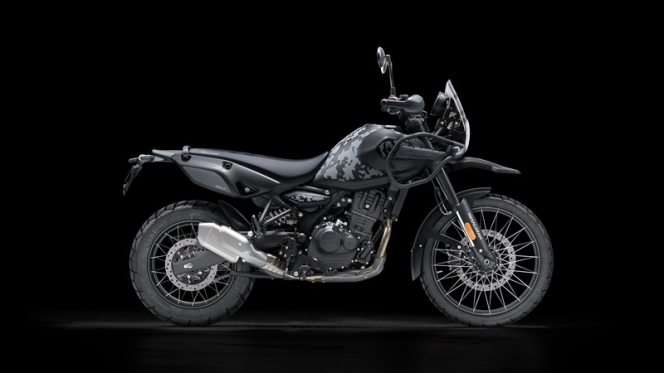
Royal Enfield has announced the launch of the Himalayan Mana Black Edition in India at Motoverse 2025. This follows its global unveiling at EICMA 2025. The new version, priced at INR 337,000 (ex-showroom) is inspired by the Mana Pass, a high-altitude route located at 18,478 feet (5,632 meters) above sea level.
The design and ergonomics of the Mana Black Edition are created to maximise off-road riding. The edition features matte details and a Stealth Black finish, suggesting purpose and adventure. It is intended for riders who view every route as a calling.
The Mana Black edition is intended for the spirited rider prepared for adventure and comes with factory-fitted equipment. The machine embodies Royal Enfield's Philosophy, enabling those who aspire to travel farther and conquer.
A distinguishing feature of the Mana Black Edition is its factory-accessorised setup, complete with curated adventure equipment. Components include – black rally hand guards, black rally seat for grip and long-distance comfort, rally mudguard for rough routes and tubeless spoked wheels for durability.
The motorcycle is powered by the Sherpa 450 engine, maintaining the performance and agility of the new Himalayan platform.
- Ultraviolette Automotive
- F77 Mach 2 Recon
- F77 SuperStreet Recon
- Narayan Subramaniam
- MotoMond
- X-47
- Teserract
- Bosch
- Jan Ykema
Ultraviolette Automotive Launches F77 Electric Motorcycles In UK
- By MT Bureau
- November 18, 2025
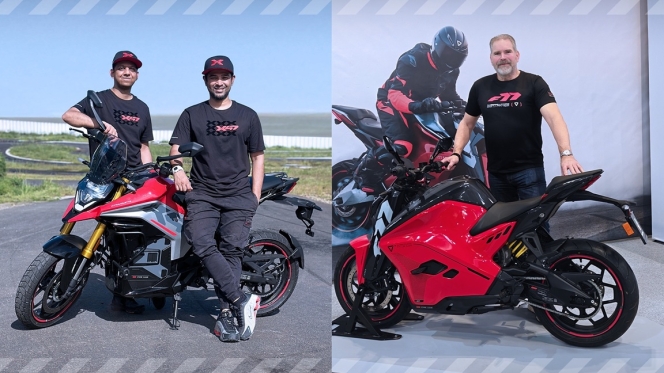
Bengaluru-based electric vehicle and technology company Ultraviolette Automotive has officially launched its F77 Mach 2 Recon and F77 SuperStreet Recon electric performance motorcycles in the United Kingdom. The expansion is in partnership with MotoMondo, the company's exclusive distribution partner in the region.
The launch was announced at the Motorcycle Live Show in London. Ultraviolette showcased its full product portfolio, including the F77s, F77 SuperStreet, X-47, Tesseract, Shockwave and the F99.
Narayan Subramaniam, CEO & Co-founder of Ultraviolette, said, “Earlier this year, we achieved a key milestone with the launch of the F77s across Europe, followed by the showcase of our future product lineup at EICMA. Today, I am pleased to announce that the F77 is officially launched in the United Kingdom, a nation renowned for its deep motorcycling heritage. It is a proud moment for us as we bring advanced performance and innovation to riders across the UK. With progression on the UK-India Free Trade Agreement, we believe it will further enhance the ease of bringing advanced mobility technology to the region and strengthen cross-border collaboration. We have unveiled our future product line-up: the world’s first motorcycle with radar as standard- the X-47 Crossover, along with our scooter platform-the Tesseract, and our light motorcycle platform- the Shockwave. Our product portfolio offers a clear glimpse into the future of mobility, where intelligence, purposeful design, and instinctive safety come together. With the support of our strategic partner MotoMondo, Ultraviolette is committed to setting new benchmarks across the United Kingdom and beyond.”
The F77 series draws inspiration from aeronautics. The motorcycles deliver 30 kW of peak power and 100 Nm of torque, resulting in a top speed of 155 kph. The bike is powered by a 10.3 kWh battery pack, offering a range of up to 323 kms (IDC).
It features the company’s proprietary artificial intelligence system, Violette A.I., switchable Dual-Channel ABS (developed by Bosch), 10 levels of Regenerative Braking, 4 levels of Traction Control and Dynamic Stability Control.
At the show, Ultraviolette unveiled the X-47 Crossover, a motorcycle that blends two segments and is engineered for versatility across terrains. The X-47 is the first in its class to feature integrated radar technology as standard across all variants, which adapts to lean angles up to 20 degrees. This system, powered by UV HyperSense, introduces the Advanced Rider Assistance System (ARAS) to the segment.
Jan Ykema, Managing Director of MotoMondo, commented “We are proud to bring Ultraviolette to the UK, marking a historic first step in bringing their revolutionary electric motorcycles to riders across the United Kingdom. The F77 series embodies cutting-edge technology, aerodynamic precision and performance-driven engineering, perfectly aligning with the dynamic motorcycling culture in the UK. It is a genuine and affordable mobility solution in a world where there will be more and more restrictions for ICE vehicles of which the cost of ownership will continue to rise. We are excited to partner with Ultraviolette and look forward to seeing the enthusiasm of riders as they experience the future of motorcycling first-hand.”



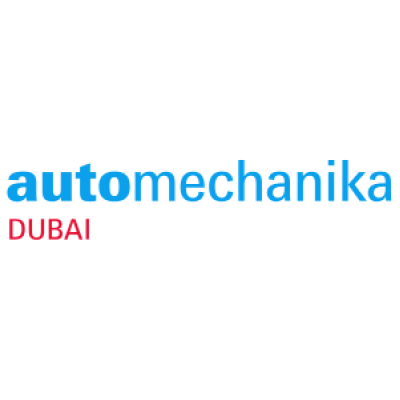


Comments (0)
ADD COMMENT